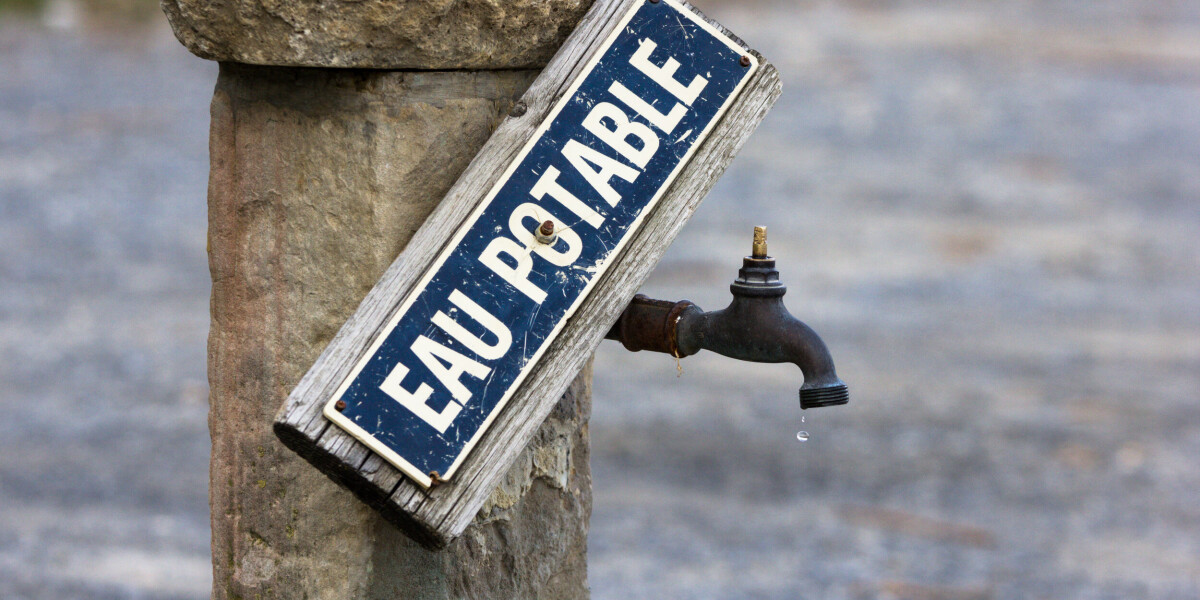
Maximum alert: drought crisis declared in parts of southern france
- Select a language for the TTS:
- UK English Female
- UK English Male
- US English Female
- US English Male
- Australian Female
- Australian Male
- Language selected: (auto detect) - EN
Play all audios:

PARTS OF OCCITANIE WERE PUT ON THE HIGHEST DROUGHT ALERT LEVEL ON FRIDAY AS POLITICIANS WARN OF A ‘HUMAN AND ECOLOGICAL CATASTROPHE’ Part of the Pyrénées-Orientales department (Occitanie) is
now on a ‘crisis’ alert level for drought, its prefect announced on Friday (April 28). The alert will enter into force from May 10, said Rodrigue Furcy at a press conference. > 🔴🚨
OFFICIEL. Les Pyrénées-Orientales basculent en crise > #sécheresse : voici ce qui va changer ➡️ > https://t.co/PE9J6oHWNn pic.twitter.com/D5x5t4b538 > — Actu Perpignan
(@actuperpignan) April 28, 2023 The ‘crisis’ level is the highest alert level possible (of four levels). The Têt and Agly areas are affected so far, both in the northern half of the
department. On its website, the Ecological Transition Ministry explains that this high level is “declared to preserve water for priority use”. “To do this in April is extremely early,” Serge
Zaka, an agro-climatologist, TOLD _LE FIGARO_. “This level is generally reached in July or August in this department, and even then, not every year. “But this crisis level in this
department could have been justified as early as two months ago, or even a year ago.” Mr Zaka said the high alert level was a “drastic” action, designed to save as much water as possible. A
CRISIS ALERT LEVEL MEANS: * No non-priority water use, including for farming * No water use for anything other than priority reasons (health, hygiene, or national security) The department
was already placed on ‘reinforced or heightened alert level’, the second-highest level. This meant individuals were already banned from watering their gardens, filling up swimming pools, or
cleaning their vehicles (outside of established car washes). The decision to impose an alert on a department is “taken at the local level by prefects”, states the government website
Propluvia. “Drought decrees can only be set for a limited period, in a set area.” Even within the same department, drought alerts and decrees can be handled differently. For example,
currently, 19 communes in Bouches-du-Rhône are at ‘crisis level’ alert, while 28 communes are in a state of ‘alert’ (second-lowest), and the rest of Bouches-du-Rhône is at ‘vigilance’ level
(the lowest level). The alerts, especially at lower levels, are intended to raise awareness among the public and to prepare them in case more restrictions are needed. WATER SHORTAGES ALREADY
BITING Water shortages are already affecting certain villages in the department, said Mr Furcy. Already, “around 20 communes” are experiencing water tension, or will be “by the end of the
summer”, he said. Four communes are without water completely, with their water undrinkable, even when it does come out of the taps. These are Bas-Confluent, Corbère, Corbère-les-Cabanes, and
Saint-Michel-de-Llotes, in a situation affecting 3,000 people. READ MORE: TAP WATER BAN IN FOUR VILLAGES IN SOUTHERN FRANCE AS SHORTAGES BITE READ MORE: NEIGHBOURS TELL ON EACH OTHER AS
DROUGHT RULES BITE IN SOUTHERN FRANCE It comes after department president Hermeline Malherbe WARNED OF an “ecological and human catastrophe today” and an “ecological catastrophe tomorrow”,
due to the drought situation in the area. She wrote an open warning letter to President Macron, highlighting that the department has not had any significant rainfall in over a year. READ
MORE: DROUGHT-HIT FRENCH DEPARTMENT IN PLEA TO PREVENT ‘HUMAN CATASTROPHE’ Earlier this month, the department was hit by France’s first major forest fire of the year. Ecological Transition
Minister Christophe Béchu visited the region yesterday (Thursday, April 27). You can check the drought level and any possible restrictions in your area at the GOVERNMENT’S PROPLUVIA WEBSITE
HERE. RELATED ARTICLES HOW BAD IS THE DROUGHT IN FRANCE? SEE RESTRICTIONS IN YOUR DEPARTMENT WARM WEATHER, DROUGHT AND FIRES: WHY IT MAY FEEL LIKE SUMMER IN FRANCE
